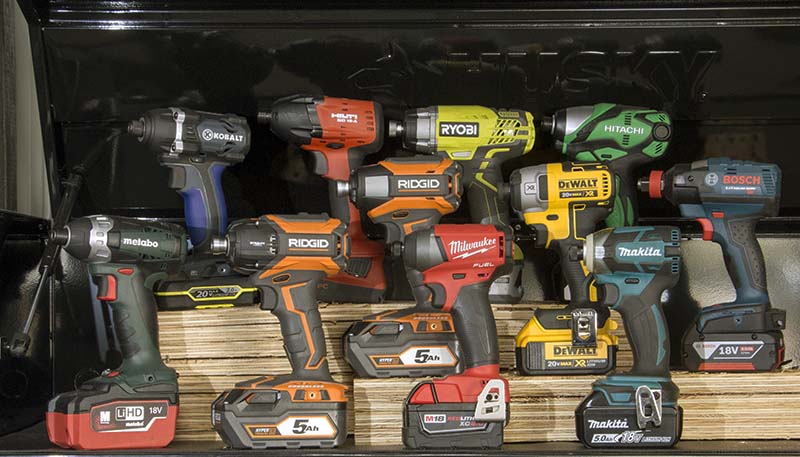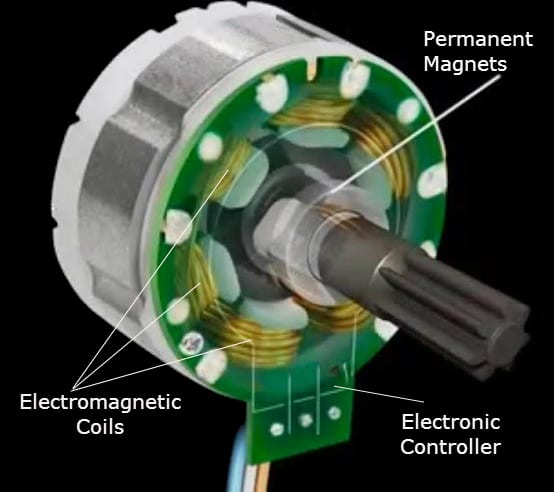Once in a while, a tool comes along that makes us wonder how we ever lived (or worked) without it. Just about every tradesman would agree that the cordless impact driver falls into that category. For decades, we tried to squeeze enough torque from our drills to drive long fasteners into hard materials. And getting a drill to budge an old, rusty screw or bolt? Not easy. There were a lot of half-sunk screws or rounded-out heads in those days. It was a problem of torque—getting enough rotational force—to make the turn. Drills could rarely tackle those harder jobs without significant stress to the tool or fastener. Viable cordless impact drivers came along in the early 2000s and our work has never been the same. If you don’t have one, we suggest you get one! Here’s what to look for when buying an impact driver.
Table of Contents
When Buying an Impact Driver Look at Brushless Motors
First, consider impact drivers with brushless motors. Brushless motors typically cost more than brushed motors, but they encounter less wear and tear. They also require less maintenance—no brushes to replace.
Moreover, brushless motors run more efficiently, produce less heat, and support smart electronics. Smart electronics, or smart tools, are general terms we use to describe tools whose battery and motor communicate to optimize performance and runtime while preventing thermal overload (overheating).
Smart electronics also allow even higher-tech features like Milwaukee One-Key or DeWalt Tool Connect. We address that in more depth below. Suffice it to say, once your tools include advanced electronics, you get the ability to maintain speed under load and optimize a tool for runtime or power…or both.
It’s not the end of the world if you go with a brushed motor. You simply give up some benefits for a lower-priced entry-level tool.
Voltage and Performance
You can buy impact drivers in 12V, 18V, 24V, and even 40V configurations. By way of torque comparison, 12V impact drivers generally match the inch-pounds of torque found in 18V drills. You’ll get several hundred more inch-pounds from 18V-and-higher impact drivers. We’ll talk more about torque below. You’ll likely be able to do 80% of your job with the smaller and lighter 12V tool, but for the Pros or anyone else needing some extra muscle, 18V is the way to go.
Trigger and RPM
Even though the impact driver is meant to deliver brute force, you don’t always need all of it at once! So today’s tools generally have three RPM ranges. For instance, the Milwaukee M18 FUEL Impact Driver features 0-1700, 3000, and 3900 RPM. The Metabo HPT Triple Hammer even has four speeds for more nuanced work. Makita includes special modes for extra control in wood or metal. When you need to bear down, put the impact on its highest RPM and fully squeeze the trigger for maximum force.
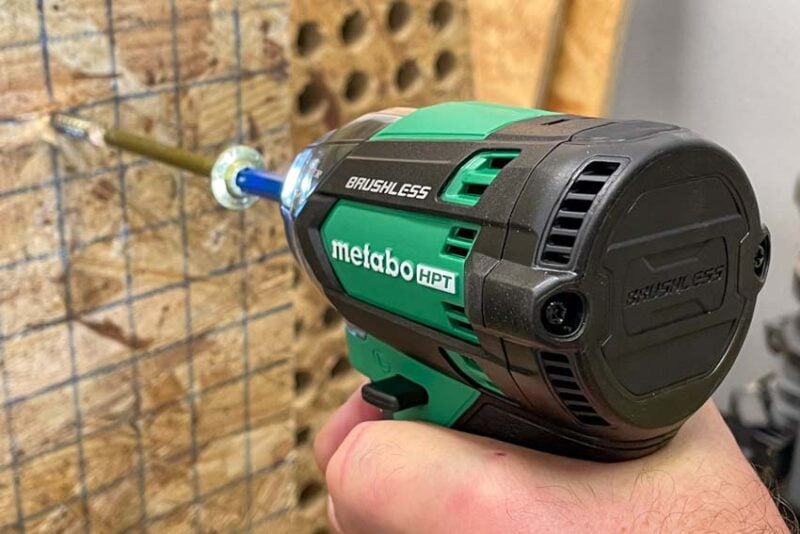
Be sure that any tool you consider has a variable speed trigger. This spreads out the RPM over a much larger range than just three or four static speeds. You’ll appreciate the extra control a variable speed trigger grants you as you slow down when the fastener is almost home. The impact driver can also avoid stripped screw heads on the way out if it’s not going full bore at the start.
Torque and IPM to Look for When Buying an Impact Driver
Torque is the showcase feature of the impact driver category. As we mentioned, for long, thick, or stubborn fasteners going into or coming out of hard material, you just can’t beat the impact’s utility. It packs a wallop that other tools can’t match. Expect 12V impact drivers to be in the 800- to 1,200-inch-pound range. Their 18V big brothers will boast 1,350 to 2,250 inch-pounds, with the average Pro model settling in between 1,800 and 2,000.
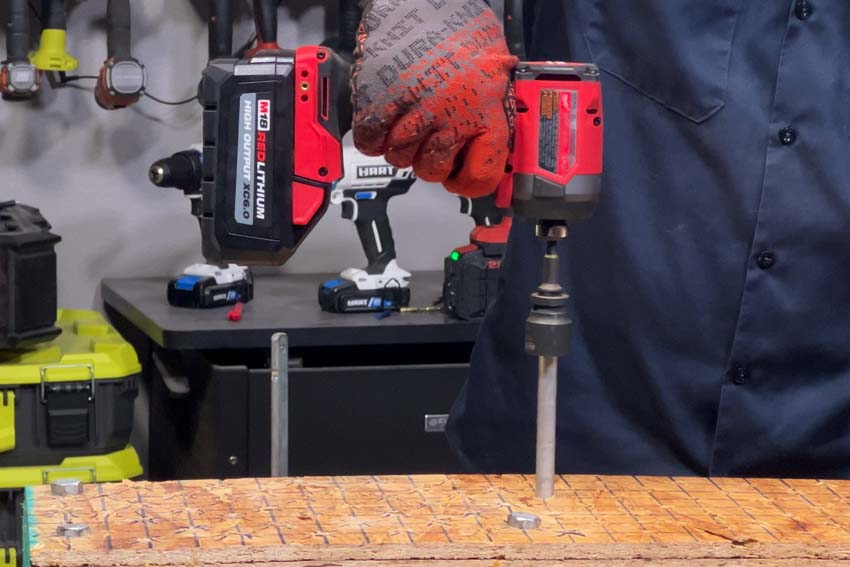
By way of comparison, our recent best cordless drill head-to-head review featured a torque range of about 750 – 1,200 inch pounds or the equivalent of the 12V impact torque range. Even then, we’d probably give the edge to the 12V impact with its hammering mechanism. And that brings us to Impacts Per Minute (IPM)—or how many blows the hammer and anvil will make against a tough fastener. Rapid pulsing can help complete a stubborn job, so consider IPM in addition to torque. Expect a no-load IPM of 2,200 to 3,500 IPM with 12V and 1,750 to 3,750 with the 18V impact drivers.
Taking a quick look back at Milwaukee One-Key and DeWalt Tool Connect will find that there are a few models that give you the ability to use an app to dial in custom speed and torque settings.
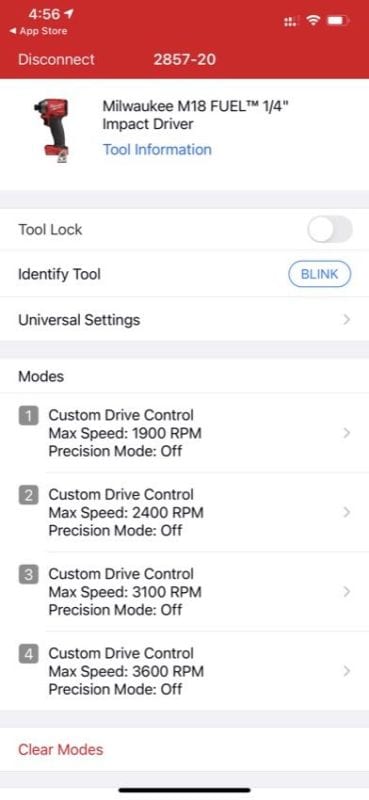
What Controls to Look for When Buying an Impact Driver
The impact driver will have a forward/reverse switch and trigger reminiscent of its drill cousin. You should be able to toggle the direction with the thumb and index finger easily. Some tools will have a neutral that locks the trigger, too. This ensures that the battery doesn’t drain if the trigger is pressed inadvertently, for instance, in a toolbag or toolbox. That’s unlikely—and you can always remove the battery if your impact doesn’t have a neutral switch.
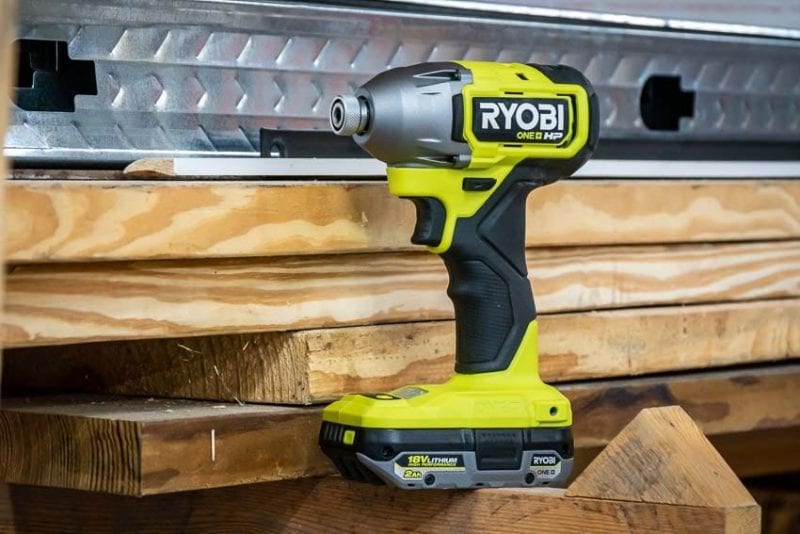
Many of today’s lithium-ion batteries have fuel gauges on the pack but some, like Hitachi, have the gauge on the tool. If it’s on the tool, that means the battery must be inserted to register its discharge status. It’s not quite as convenient as having it on the battery.
Overmold and Ergonomics
Impact Drivers have an ergonomic leg up on drills due to their smaller sizes and lighter weights. Of course, the tool must still feel good in the hand. Ideally, a rubber overmold around the handle should extend up and under the motor housing base. This provides some extra comfort for the soft area between your thumb and index finger.
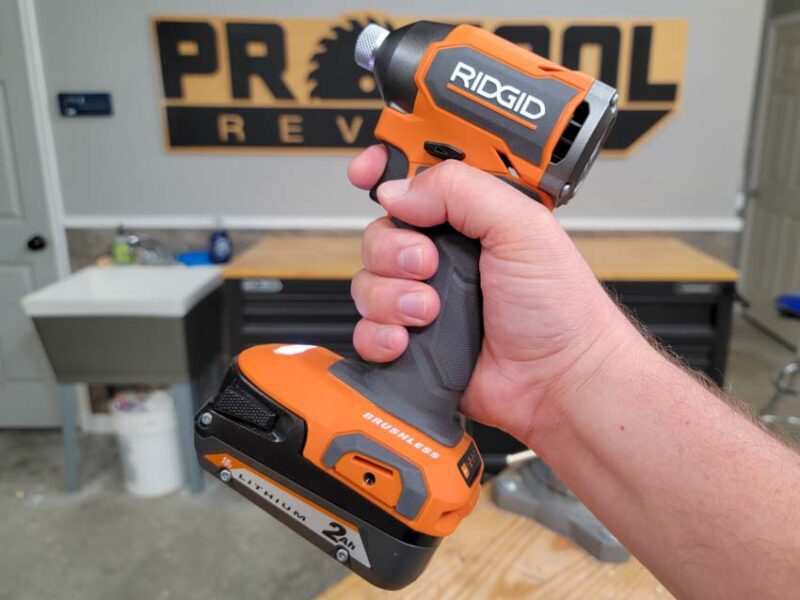
Also, look for that same rubberized overmold around the sides of the motor housing. It protects the tool’s plastic housing when the impact driver is laid (or more likely falls) on its side. This is especially important for 12V impacts because their batteries are less likely to form a base upon which the tool stands upright.
Worklight and Belt Hook
Work lights are standard on impact drivers so prepare for an illuminating experience. These lights are helpful during the drive but also in case you drop the fastener in a dimly lit area. We’ve also looked for our keys with them in a pinch!
A belt hook also comes in quite handy—at least for the Pros. Consider impact drivers with ambidextrous belt hooks that can be attached to either side of the driver. Even if you don’t think you’ll use it, you’ll likely change your mind if you’re climbing a ladder or doing a series of drives with pauses in between. Hanging the tool from the hook on your side is much easier than carrying it around or picking it up and setting it down again.
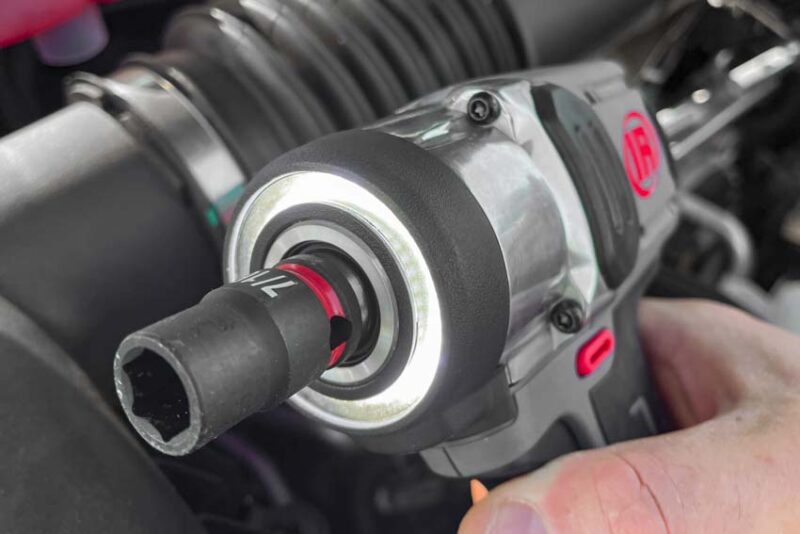
Consider the Battery Platform
Be sure to buy the right tool for the job. Buying a cordless tool is like getting married—you get the whole family, too! It’s wise to check out the full line of tools that run on the same battery as the cordless impact driver. These days, every major manufacturer has a pretty deep bench of tools. It’s convenient to adopt the same battery platform for all of your tools. But it’s certainly not the end of the world if you end up with more than one battery platform.
Now that you know what Pros look for when choosing and buying an impact driver, it’s time to head out and pick your tool!

